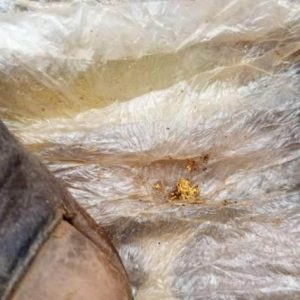This market analysis is the result of the research phase of the USAID Commercially Viable Conflict-Free Gold (CVCFG) Project, when Levin Sources interviewed manufacturers, refiners and jewellers to understand the dynamics of this complex environment much better.
Our key finding was that we need the actors along the entire length of the supply chain to work together for the project to succeed. Specifically, our research showed us that:
- In a crowded marketplace, the story of responsibly-sourced gold from the DRC must be unique, compelling and robust. It must draw in those who are prepared to partner with the project and who are prepared to manage the risks and conduct business in ASM gold from the DRC responsibly in the future.
- The mid-downstream market demands robust risk mitigation and management, in compliance with sector standards, to support trade in responsible ASM gold. Being clear about the programme’s approach to due diligence and what supply chain actors need to do to be due diligence-ready for the market is crucial.
- The industry is set up to work with existing standards and needs early clarity on which requirements and standards are to be applied. The research suggests that the Code of Risk-mitigation for ASM engaging in Formal Trade (CRAFT) could be the most appropriate to support due diligence implementation in the ASM gold supply chain.
- In order to engage quickly, the mid-downstream market needs a detailed and ongoing understanding of the upstream market and supply chain: the needs and expectations of ASM gold communities, miners and traders, and the barriers they face.
- The mid-downstream market needs to be involved in judging the feasibility and desirability of the most appropriate supply chain model to ensure it will ultimately be commercially viable. Phase 2 of the research will explore the incentives necessary to encourage stakeholders to participate in the supply chain.
- A multi-stakeholder approach is essential to improve transparency, build trust and help link the upstream supply chain with mid- and downstream actors.
- Strong linkages between upstream and midstream supply chains will guarantee that activities are steered by the entire market system that functions from mine to consumer, rather than in isolated silos.
- Given the challenges in eastern DRC, stakeholders and supply chain actors need to sign up to continual improvement of a system that can deliver an increasingly commercially viable supply of gold. This necessitates continuous monitoring, evaluation and learning and a clear feedback loop between the program, the government of the DRC and the market systems actors.
We hope industry, research and advocacy actors will find the report interesting and useful to support their own work. Our research is evolving as the project develops and is helping to shape the emerging solutions. So, watch this space for more reporting as we dig deeper into understanding the complexities of the gold supply chain from eastern DRC.



